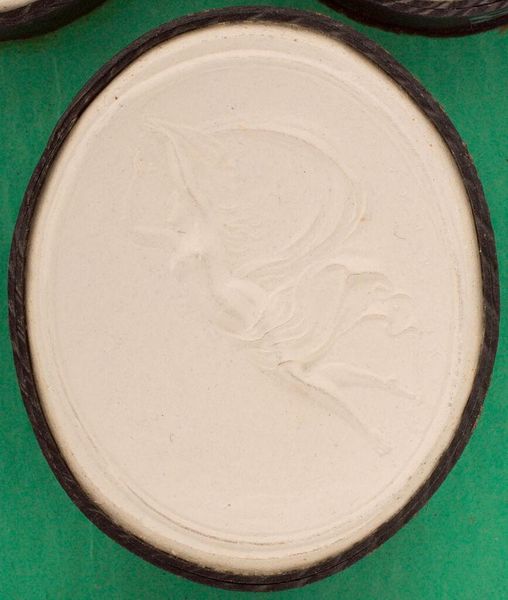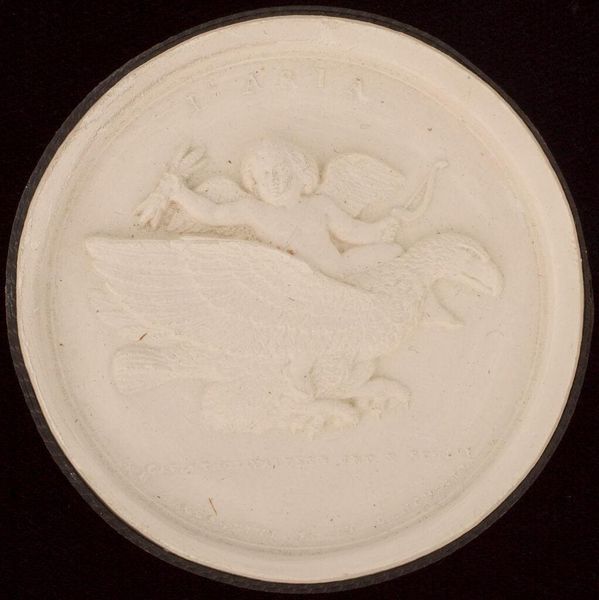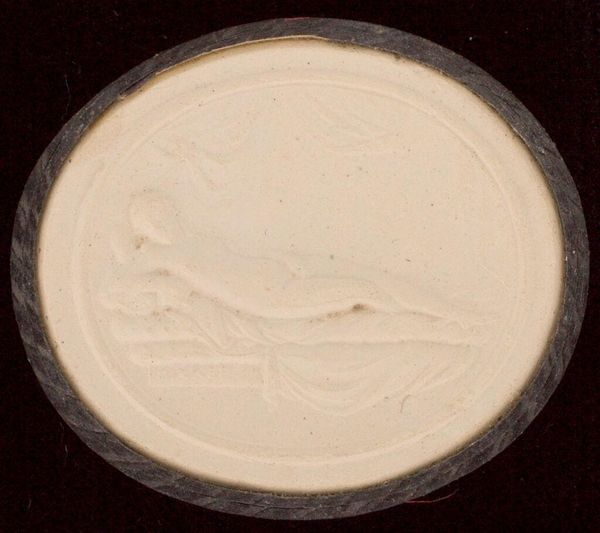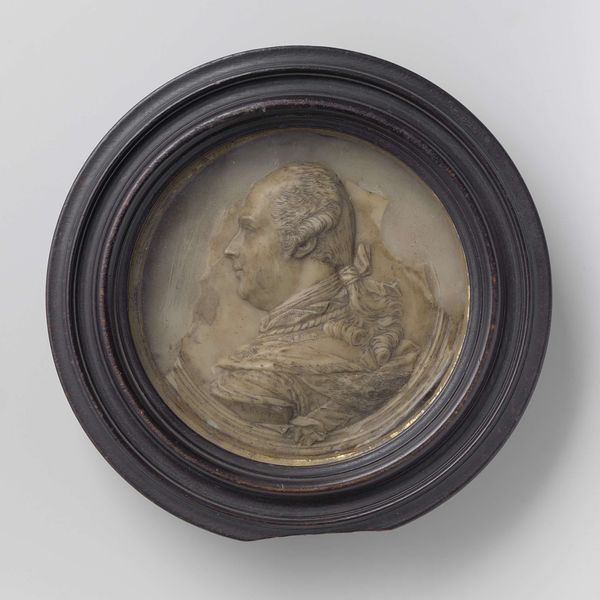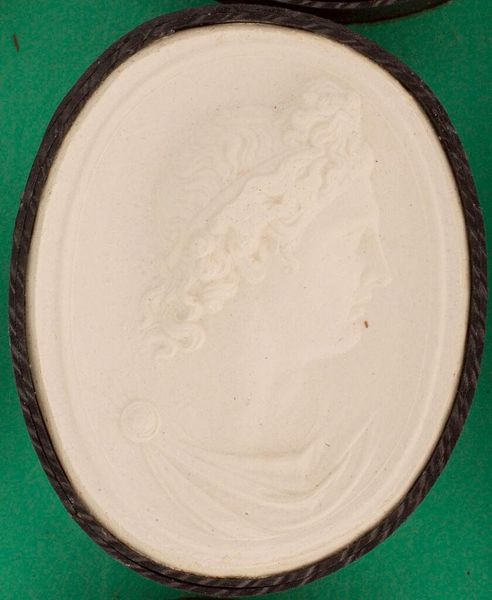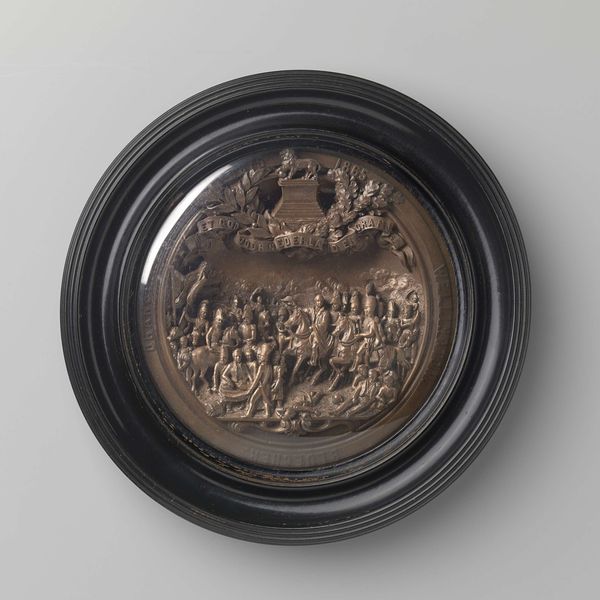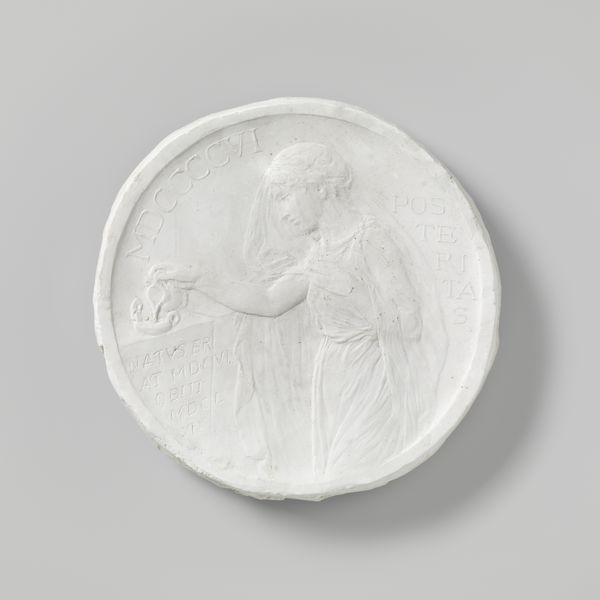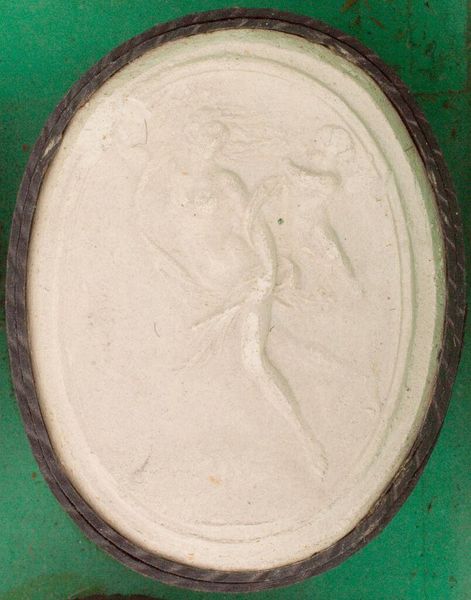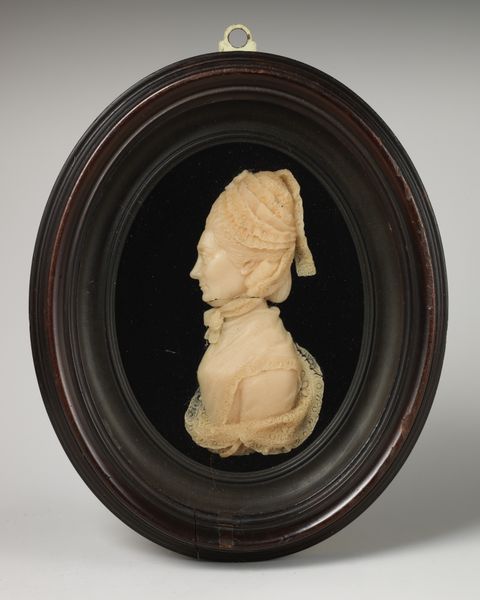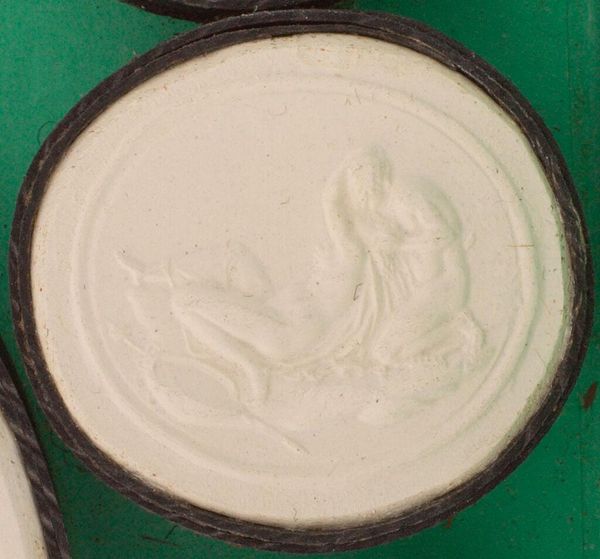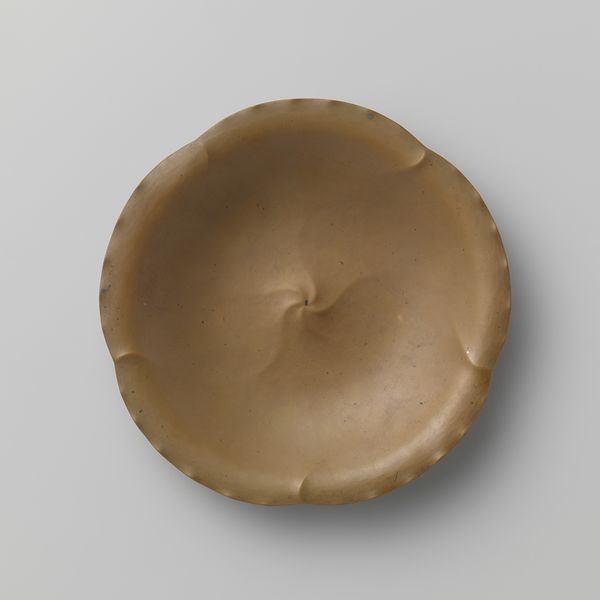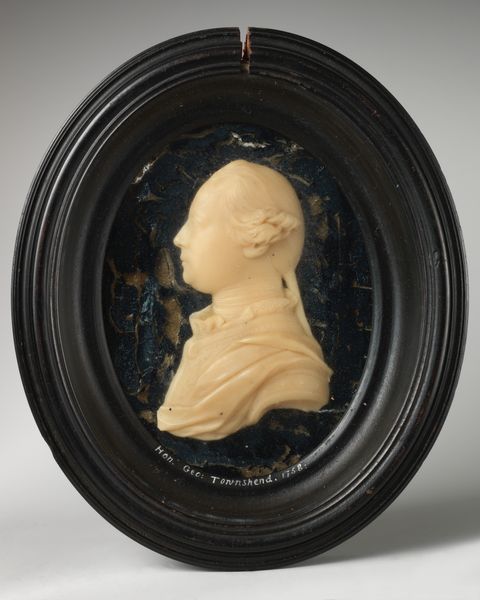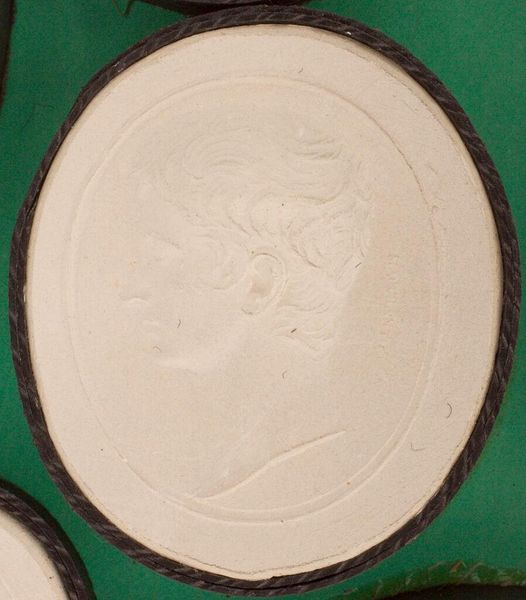
sculpture, ivory
#
portrait
#
baroque
#
sculpture
#
ceramic
#
product photography
#
ivory
#
miniature
Dimensions: diameter 9.5 cm, diameter 16.5 cm
Copyright: Rijks Museum: Open Domain
Curator: I find this ivory medallion portrait, dating from 1696 and created by Antonius Grill, particularly striking in its stark simplicity. What are your first impressions? Editor: It's so delicate. I’m immediately drawn to the craftsmanship, thinking about the hours spent carving something so intricate from such a precious material. Ivory, specifically. Curator: Precisely. Consider the sitter – an unnamed member of the elite, immortalized in ivory, a material signifying wealth, power, and access in the Baroque period. Editor: And how this piece highlights the intense global trade happening. Sourcing ivory involved extraction, transportation—exploitative labor practices we can’t ignore. Where would this ivory have come from? Who carved it and under what conditions? Curator: It prompts an essential question. Grill was clearly a skilled artisan. But understanding the work necessitates engaging with the darker truths of colonial trade. Editor: Absolutely. And thinking about ivory as a material versus marble or bronze changes the perception. This small scale shifts portraiture away from large-scale monuments and the power that represents into something more personal, a portable declaration of status. Curator: Yet even on this intimate scale, power dynamics persist. The Baroque era was deeply concerned with displaying social status, and this miniature served to circulate those symbols. What stories could it have whispered in the salons? Editor: Its size lends to its intimacy—passing it from hand to hand becomes almost an exchange of secrets. Considering production – the whiteness of the ivory, its associations with purity – the work has complexities woven into its material reality. Curator: Examining “Medaillonportret van ivoor van Antonius Grill" underscores the significance of questioning inherited notions of beauty, taste, and craftsmanship. Editor: Right, the means of production is paramount. The inherent material conditions, and their broader social implications shape its interpretation and allow a deeper look at social relations in the late 17th century. Curator: It pushes us beyond surface admiration to consider difficult but crucial histories embedded in objects we study, isn’t it? Editor: Exactly, by understanding what it took to create the piece, we understand how class and production can shift something as seemingly simple as a portrait medallion.
Comments
No comments
Be the first to comment and join the conversation on the ultimate creative platform.
